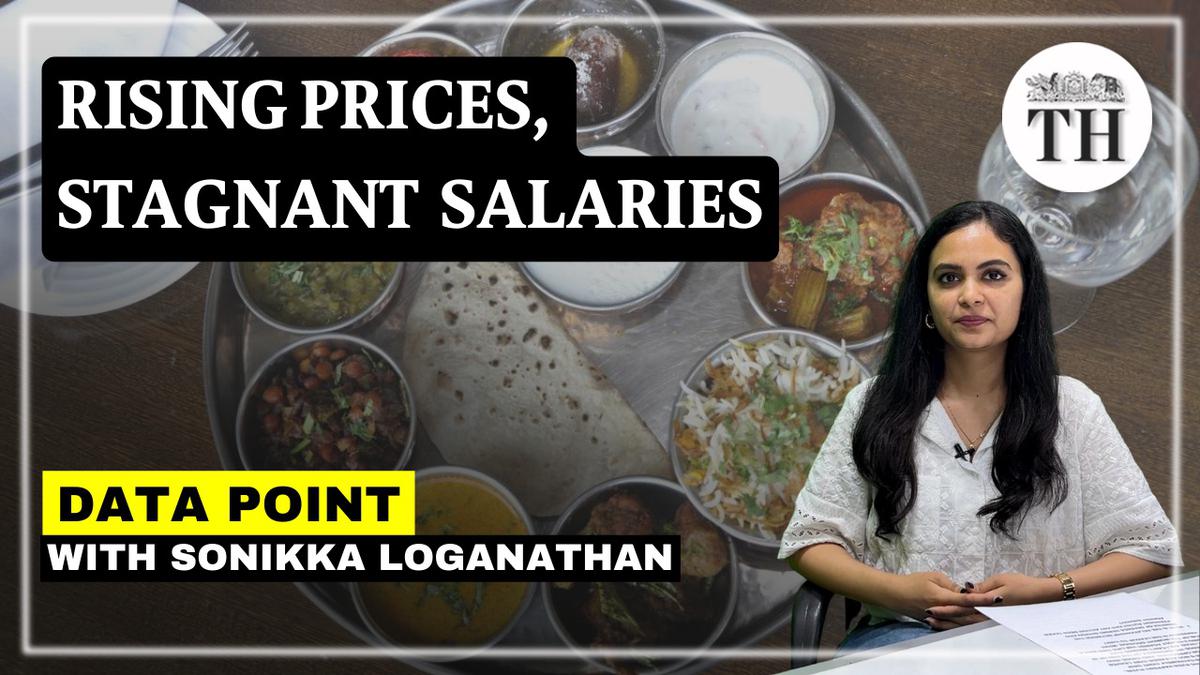
Food prices are on the rise, but are our earnings keeping up? | Data Point video
The Hindu
A video looking at the difference between how much Indians are earning, and how much they have to spend to eat nutritious meals
The price of many essential food items have been on the rise for months now. Naturally, the cost of making a thali at home, also increases.
But the wages and salaries of the average worker in India are not rising at the same rate. Using the prices of essential foods in Mumbai and wages earned in urban Maharashtra, we look at the difference between how much Indians are earning, and how much they have to spend to eat filling and nutritious meals.
Read the full story: Data | Cost of preparing meals at home rose by 65% in five years, wages by just 28%-37%
Script, presentation and production: Sonikka Loganathan
Data support: Vignesh Radhakrishnan and Sonikka Loganathan

“Writing, in general, is a very solitary process,” says Yauvanika Chopra, Associate Director at The New India Foundation (NIF), which, earlier this year, announced the 12th edition of its NIF Book Fellowships for research and scholarship about Indian history after Independence. While authors, in general, are built for it, it can still get very lonely, says Chopra, pointing out that the fellowship’s community support is as valuable as the monetary benefits it offers. “There is a solid community of NIF fellows, trustees, language experts, jury members, all of whom are incredibly competent,” she says. “They really help make authors feel supported from manuscript to publication, so you never feel like you’re struggling through isolation.”

Several principals of government and private schools in Delhi on Tuesday said the Directorate of Education (DoE) circular from a day earlier, directing schools to conduct classes in ‘hybrid’ mode, had caused confusion regarding day-to-day operations as they did not know how many students would return to school from Wednesday and how would teachers instruct in two modes — online and in person — at once. The DoE circular on Monday had also stated that the option to “exercise online mode of education, wherever available, shall vest with the students and their guardians”. Several schoolteachers also expressed confusion regarding the DoE order. A government schoolteacher said he was unsure of how to cope with the resumption of physical classes, given that the order directing government offices to ensure that 50% of the employees work from home is still in place. On Monday, the Commission for Air Quality Management in the National Capital Region and Adjoining Areas (CAQM) had, on the orders of the Supreme Court, directed schools in Delhi-NCR to shift classes to the hybrid mode, following which the DoE had issued the circular. The court had urged the Centre’s pollution watchdog to consider restarting physical classes due to many students missing out on the mid-day meals and lacking the necessary means to attend classes online. The CAQM had, on November 20, asked schools in Delhi-NCR to shift to the online mode of teaching.









